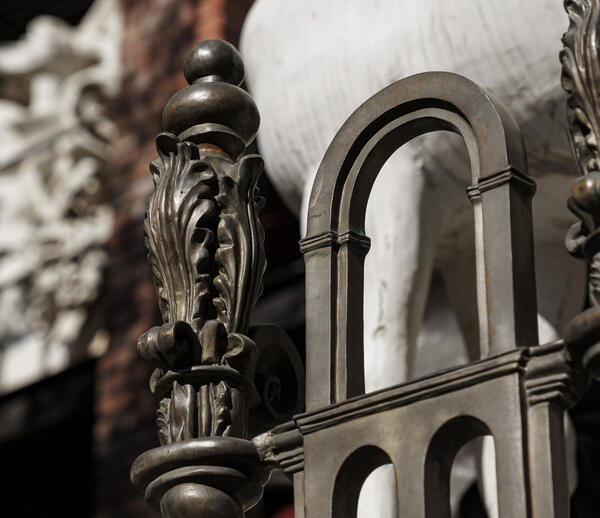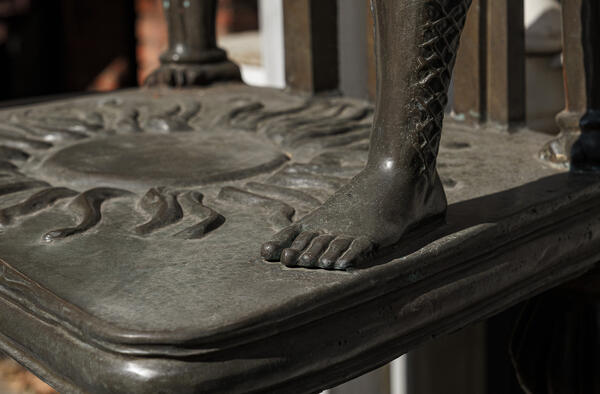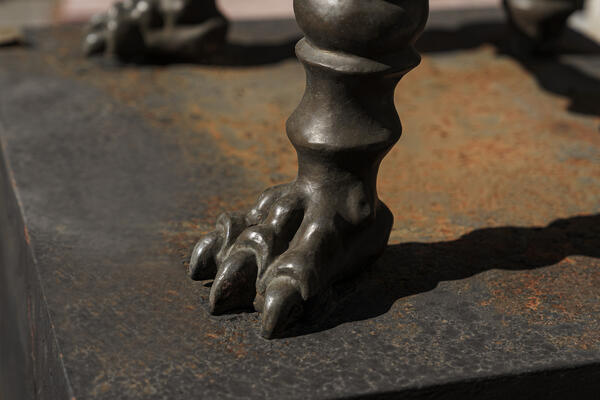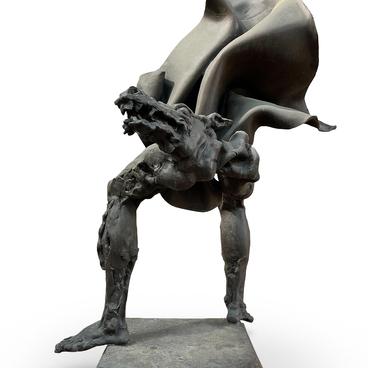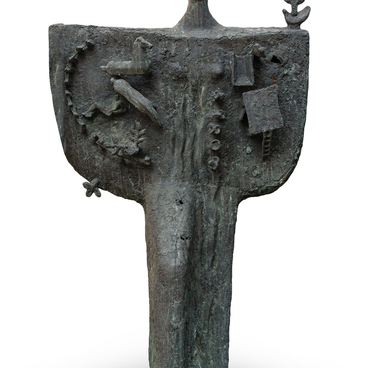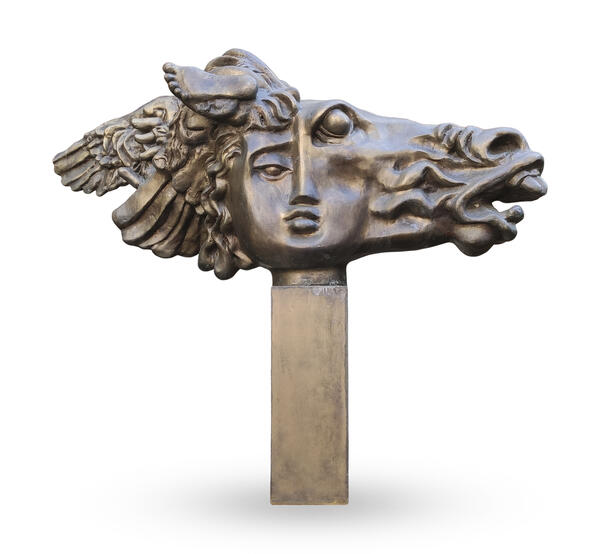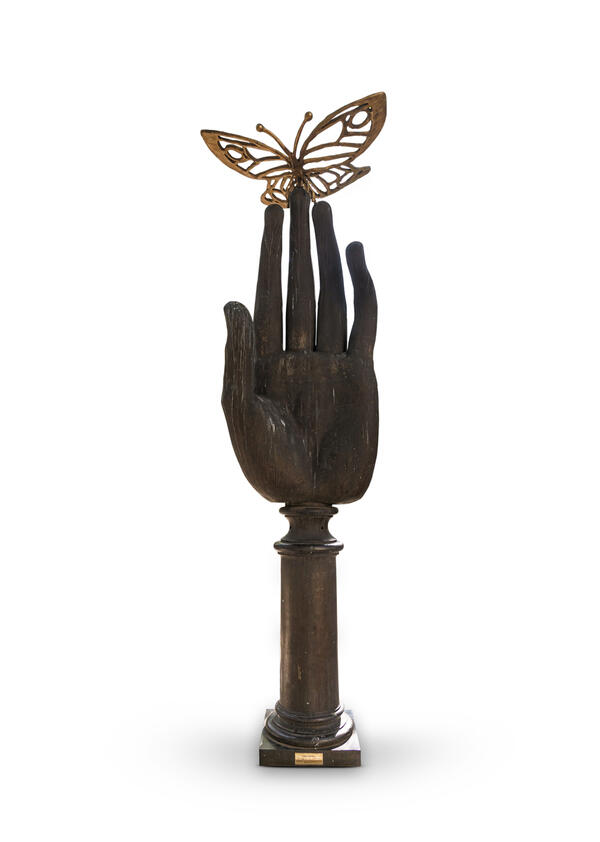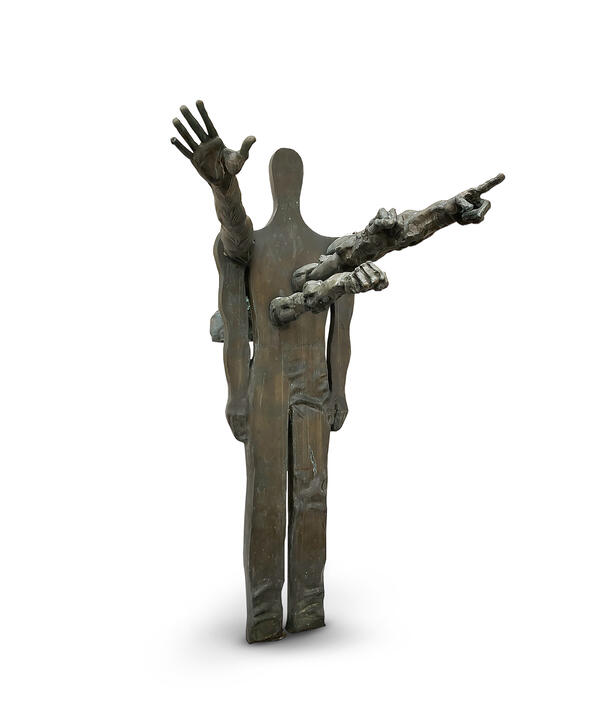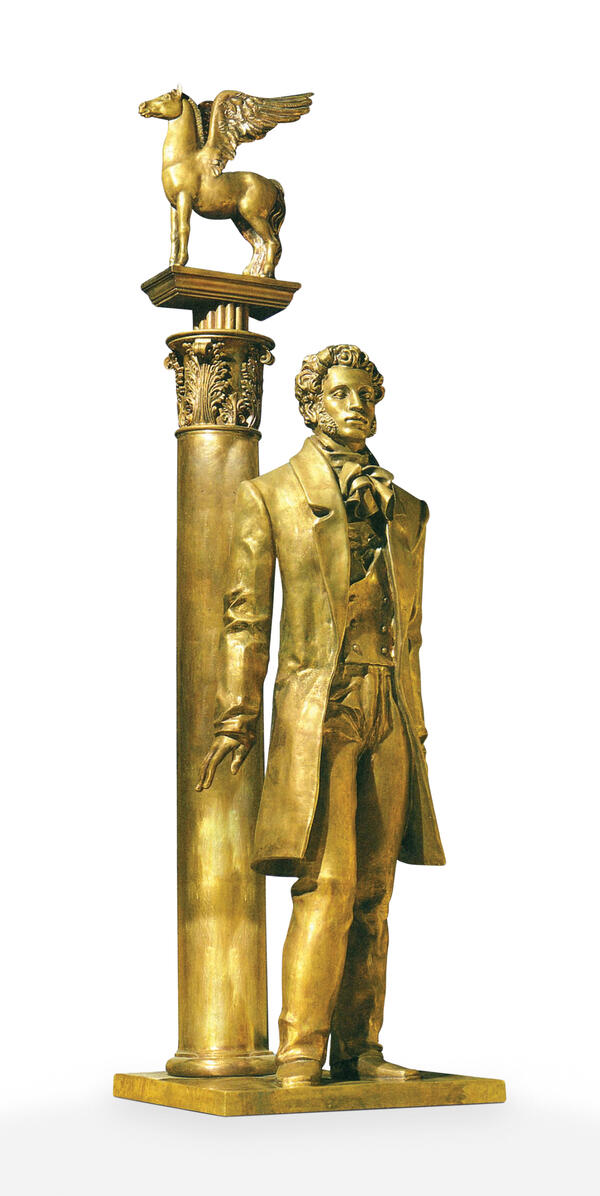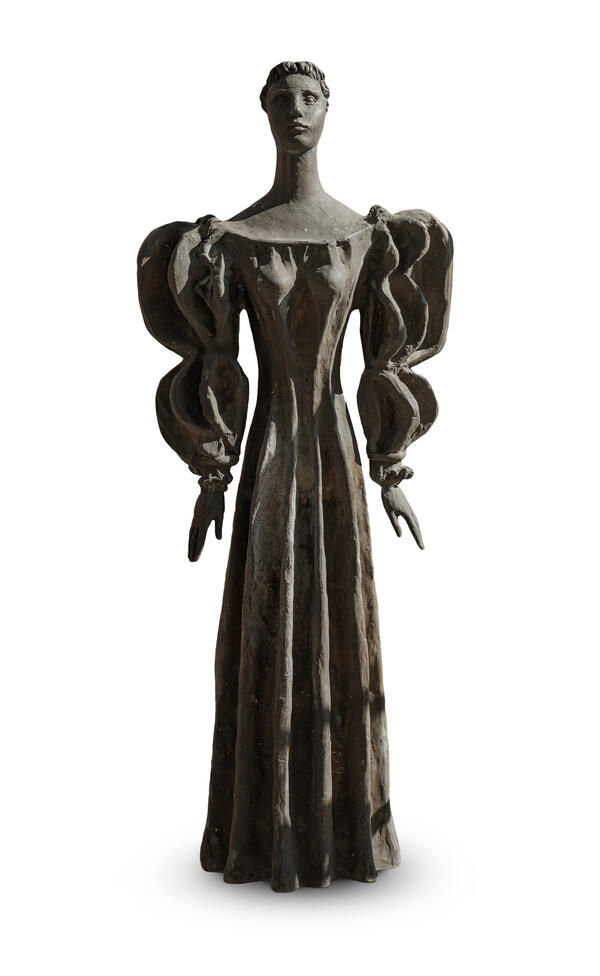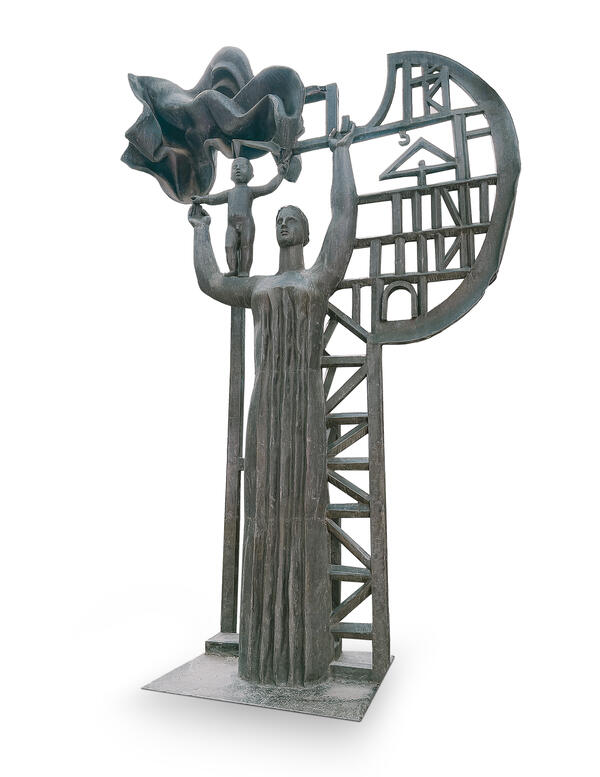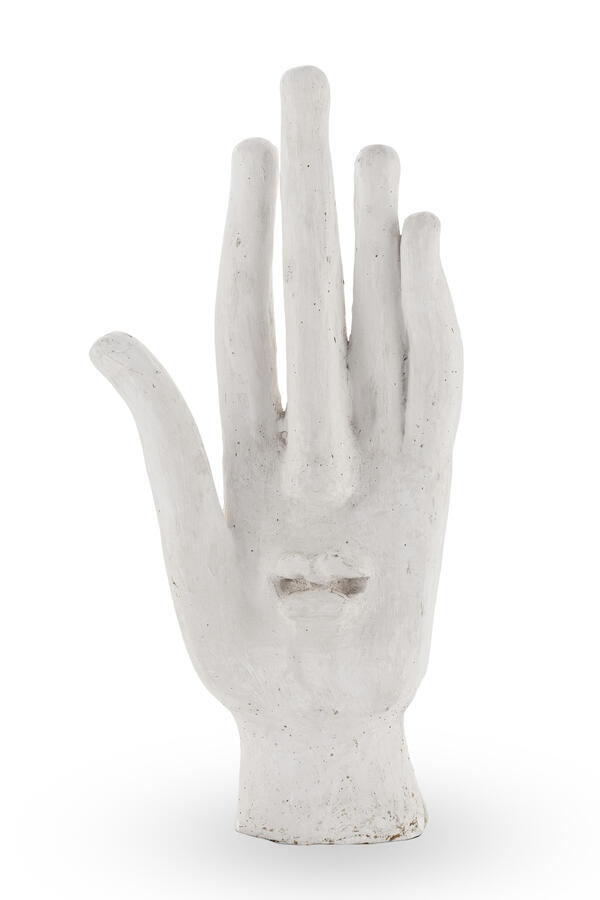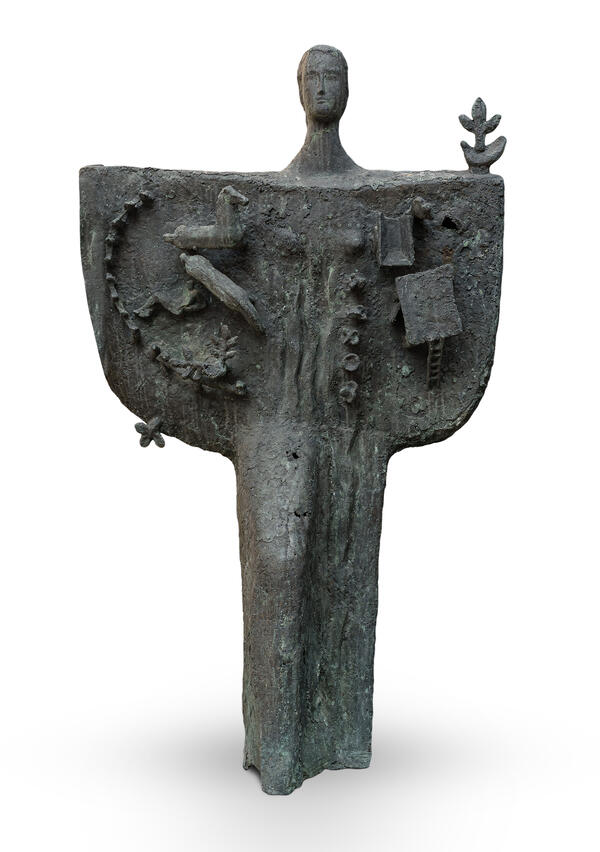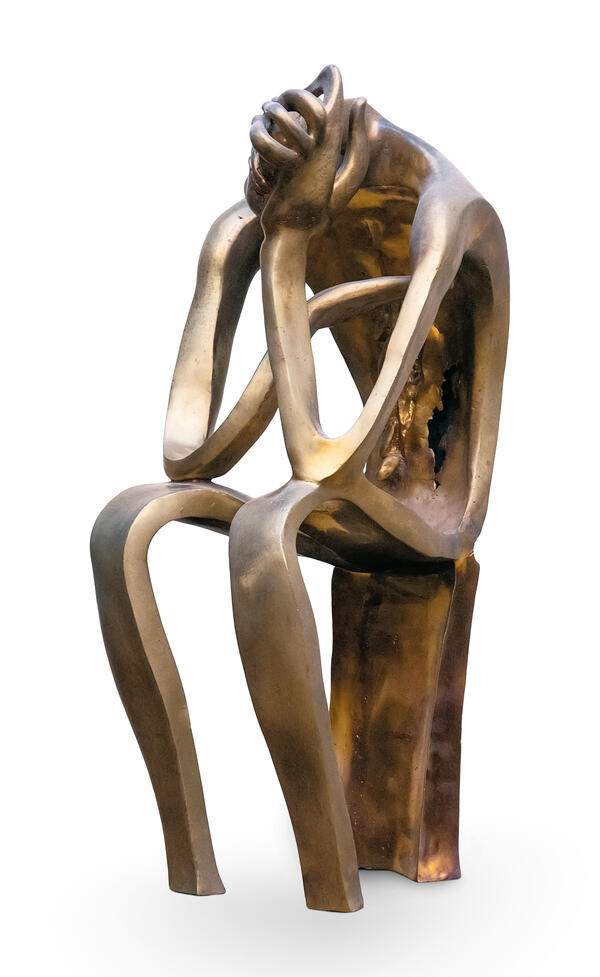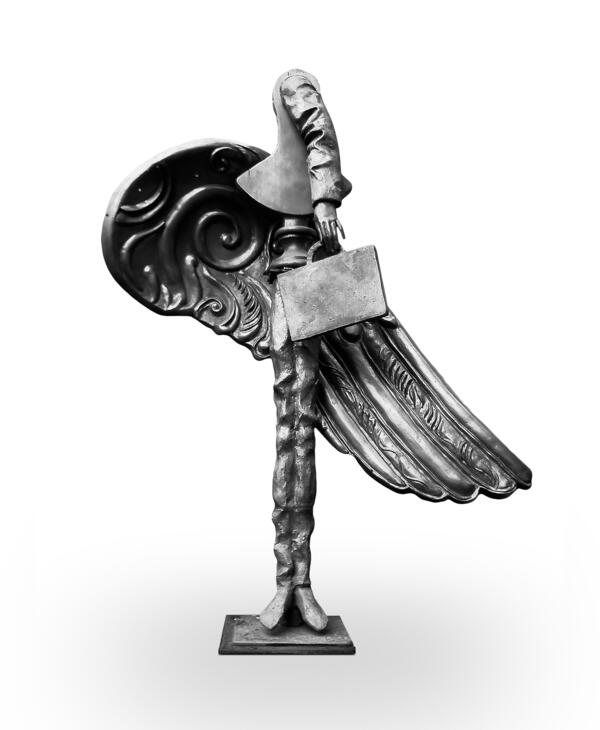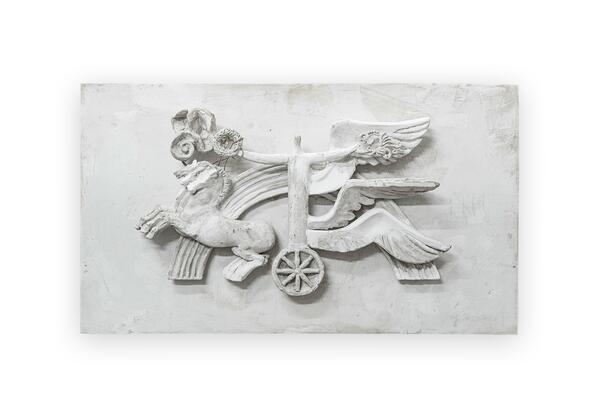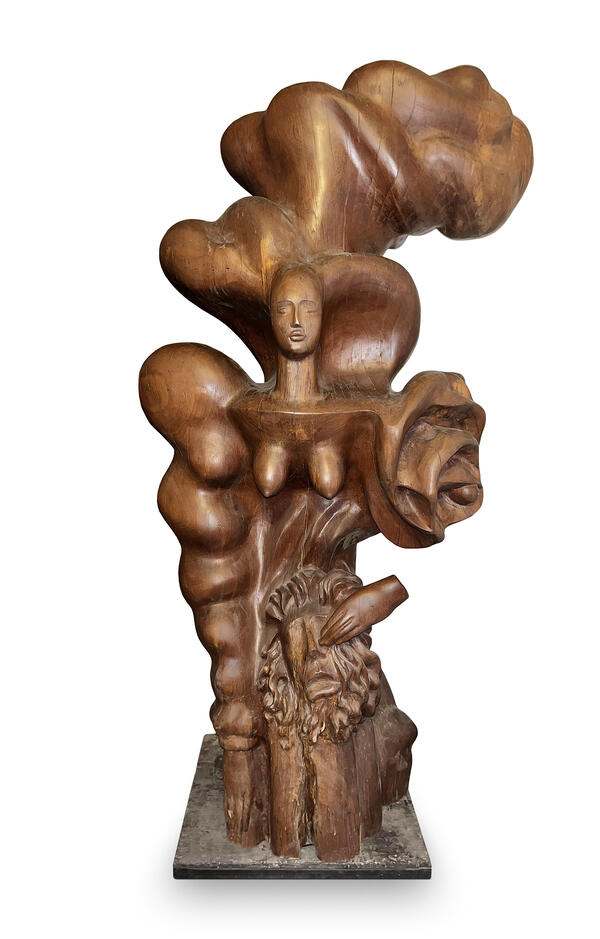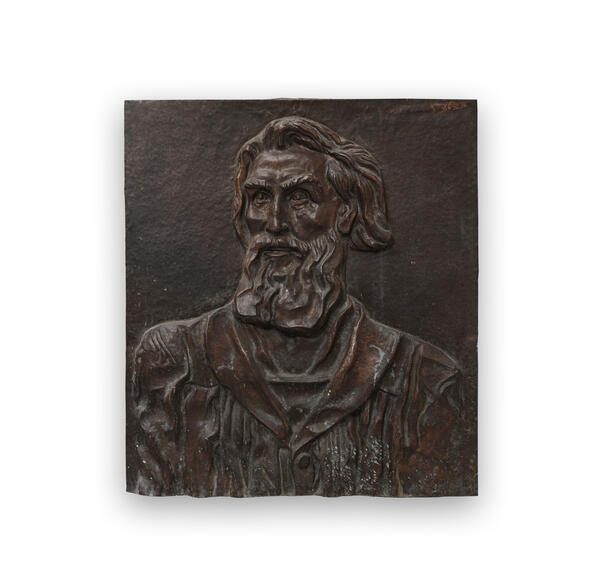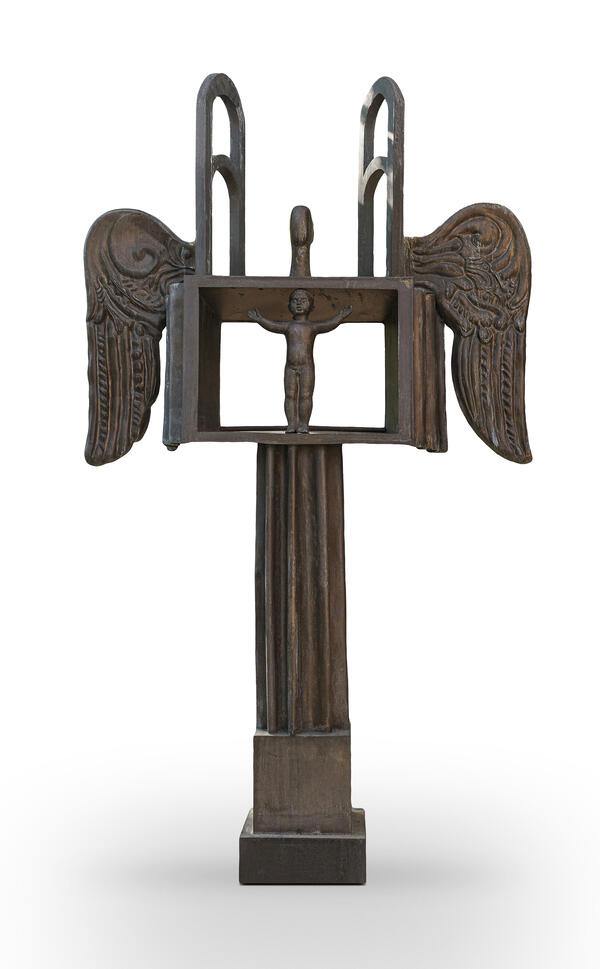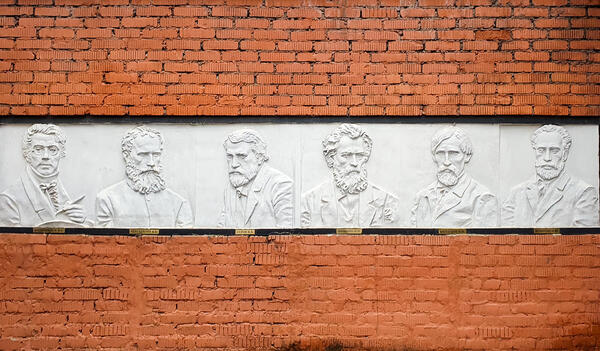When creating minimalist sculptures, Alexander Nikolayevich Burganov uses signs and symbols that encourage the attentive viewer to engage in philosophical reflections on the mysteries and contradictions of the world, on the struggle and interaction of opposites. An example of this is the 1997 sculpture “Throne” presented in the museum’s Grand Courtyard.
Since ancient times, in various cultures and religions, the throne has symbolized power, both earthly and divine.
A throne (from Greek “thronos”) is the seat of rulers, elevated above ordinary people and symbolizing unlimited power. Over time, thrones became more luxurious and began to be decorated with gold, precious stones, and various symbols. This emphasized the divine origins of rulers, their connection with heavenly forces, and their sound footing on earth.
In Hinduism, the lotus throne is the seat of Vishnu.
In Buddhism, the diamond throne is considered the center of the universe and is located under the Bodhi tree (“tree of awakening”). The Buddha is depicted sitting on a lotus or diamond throne, while an empty throne indicates that the Buddha is present, but his features are too beautiful to be depicted.
In Judaism, the throne of God symbolizes God’s presence on earth and the center of the cosmos. In Byzantine art, an empty golden throne also became a symbol of God’s divine presence.
Alexander Burganov’s sculpture “Throne” is supported by lion’s paws, while the curved armrests rest on bare human feet. The composition is completed by a high backrest resembling the arches of Christian churches and topped with a set of twisted columns. The legs may represent a person’s connection to everything worldly and a difficult path in life.
Perhaps, this artwork reflects the sculptor’s thoughts on the complexity of
human existence, on the eternal struggle between the earthly and the spiritual,
between good and evil, and between earthly power with its material wealth and
high ideals. However, the sculptor often says that he does not wish to impose
his opinions on the viewer, as every visitor to the museum is entitled to their
own interpretation and conclusions.


